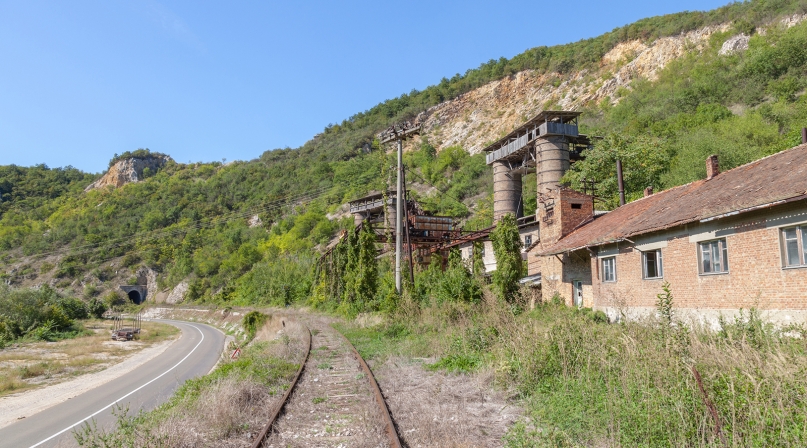House OKs brownfields renewal program
Upcoming Events
Related News

Brownfields bill passed by House expands liability protection for state and local governments that acquire them, expands grants and allows more costs to be charged to grants
The House has approved a popular Environmental Protection Agency (EPA) program that helps communities revitalize underused and contaminated land. The bipartisan Brownfields Enhancement, Economic Redevelopment, and Reauthorization Act of 2017 (H.R. 3017) passed the House Nov. 30 by a vote of 409-8. Although the program expired in 2006, its popularity prompted Congress to appropriate funds on an annual basis.
Originally passed in 2002 as part of the Small Business Liability Relief and Brownfields Revitalization Act (P.L. 107-118), EPA’s brownfields program provides technical assistance and grants for communities to reclaim previously owned industrial sites that have fallen into disuse.
Learn More
According to the EPA, there are more than 400,000 U.S. brownfields. Since the program’s inception, there have been more than 27,075 brownfields assessments and 69,275 brownfields acres cleaned up. This has sparked economic development opportunities and created over 129,240 jobs.
Key provisions in the Brownfields Enhancement, Economic Redevelopment, and Reauthorization Act of 2017 include:
Expands brownfields liability protection for state and local governments that acquire brownfields. Under the Comprehensive Environmental Response, Compensation and Liability Act of 1980, also known as “Superfund” or “CERCLA,” local governments have liability protection if they acquired the brownfields involuntarily through bankruptcy, tax delinquency or abandonment and did not cause or contribute to the contamination. However, under CERCLA, local governments must meet a separate set of standards if the brownfields are acquired voluntarily. H.R. 3017 expands the scope of CERCLA to provide liability protection to state and local governments for both voluntarily and involuntarily acquired brownfields.
Includes abandoned petroleum sites as brownfields if there is no viable responsible party, and if the EPA and the state determine that the entity assessing and remediating the site is not liable to clean up the site. According to EPA, close to half of brownfields are contaminated by leaking underground storage tanks such as those found at unused gasoline stations.
Broadens the universe of eligible brownfield grant entities to include 501(c)(3) organizations with a limited liability corporation, limited liability partnership and/or a qualified community development entity. While this provision would potentially broaden the types of entities that would qualify for funding, brownfields redevelopment projects are expensive and the grants only cover a small portion of the costs. This inclusion may allow more counties, especially rural ones, to partner with outside entities to redevelop brownfields.
Increases funding for brownfields cleanup grants from $200,000 to $500,000 per site and allows EPA to waive that limit up to $750,000 based on need.
Creates a multipurpose brownfield grant program that would allow eligible entitles to undertake multiple brownfield projects under the same grant. The bill allows EPA to issue multipurpose grants up to $1 million.
Permits additional administrative costs to be charged back to the grant. Grant recipients can use up to 5 percent of their brownfields grant for administrative costs.
Allows grants for renewable energy projects on brownfield sites. This includes facilities that generate wind, solar or geothermal energy or any energy efficiency improvement projects on brownfields.
Provides small community technical assistance grants of $20,000 to states for communities with populations under 10,000 and/or in disadvantaged areas where the annual median household income is less than two-thirds of the state-wide annual median income.
The bill has been sent to the Senate for consideration. A similar bill, the Brownfields Utilization, Investment and Local Development Act (S. 822) was passed by the Senate Environmental and Public Works Committee in July. S. 822 is currently awaiting action on the floor of the Senate.
Attachments
Related News
‘Fix-It Fair’ brings new life to damaged items, helps divert waste
Thurston County, Wash. partnered with a non-profit, whose members volunteer to fix things that were difficult to recycle.

U.S. House of Representatives passes SPEED Act and other permitting reform bills
On December 18, the U.S. House of Representatives passed the SPEED Act (H.R. 4776). The SPEED Act would strengthen county involvement in decision-making and make needed commonsense reforms to the federal environmental review process.

House Natural Resources Committee advances the Endangered Species Act Amendments Act of 2025
On December 17, the House Natural Resources Committee advanced the Endangered Species Act (ESA) Amendments Act of 2025 (H.R. 1897). The version passed by the committee adopted several changes from the initial bill and would address key county concerns by improving the implementation of the ESA. The legislation now awaits a floor vote before the whole U.S. House of Representatives.